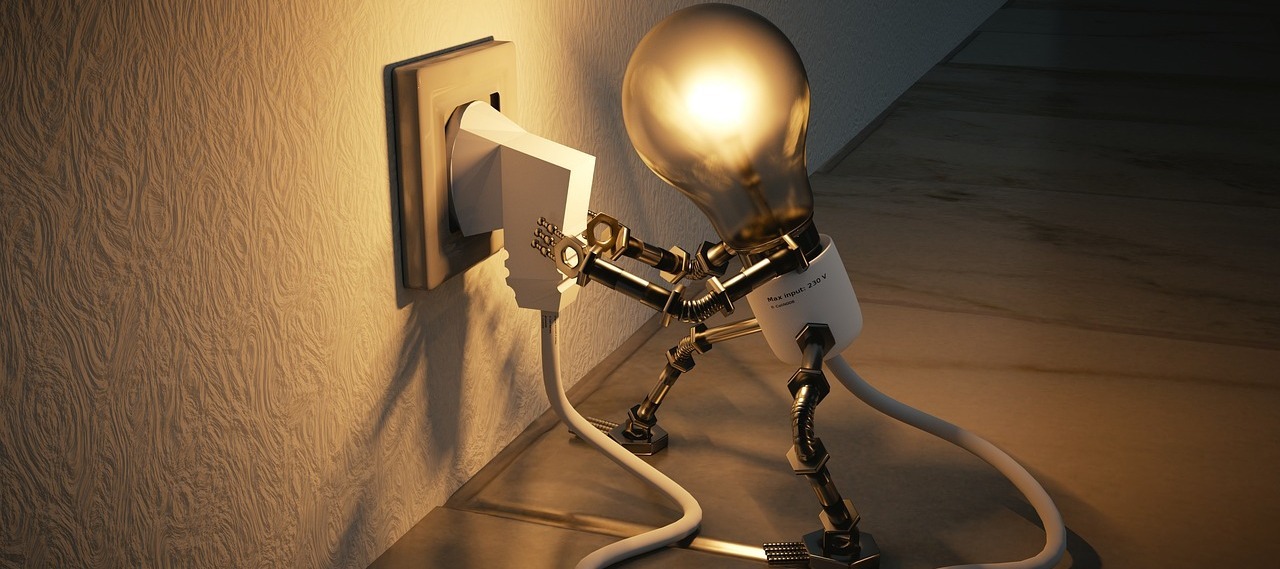
How can AI support human creativity? Here's what a new study found
Progress in some fields is slowing down. For example, today, it takes 18 times more researchers to double microchip density than in the early 1970s. In fact, a Stanford University study found that while research effort had increased by a factor of 23, research productivity fell by times-41 over the same period.
We should be generating more and better ideas. The great hope for accelerating the pace of innovation now lies in artificial intelligence (AI). The application of emerging AI technologies is already radically shortening drug development cycles, accelerating the design of new materials and developing new hypotheses.
The leading opinion is that AI cannot generate fundamentally new ideas on its own but that it can support humans to do so so by catalyzing human creativity. What’s easy to overlook, however, is that AI can also inhibit human creativity because as AI gets more intelligent, it becomes more helpful and distracting. Therefore, we should know how AI can support human creativity and where it does more harm than good. A recent study by the Gottlieb Duttweiler Institute explored these questions.

3 ways AI can catalyze human creativity
1. Identify patterns
AI can identify patterns in large data sets, inspiring humans to develop new hypotheses they may have missed. For example, researchers have used machine learning to predict which chemical combinations could help produce car batteries, and they found four promising options to test in a real-life setting.
It can also present more digestible content than plain data and numbers. Self-learning algorithms can write complete texts, talk to us with computer-generated voices or even create emotive pieces of music.
2. Provide the bigger picture
AI can cut through and automatically analyze large amounts of information from various sources by filtering, grouping and prioritizing. It can also create knowledge graphs and help humans identify associations between seemingly unconnected data. These could be used in drug research to identify interactions between different substances, develop new therapies and mitigate side effects.
In the future, ChatGPT and similar tools will explain complex relationships without us reading numerous websites and articles.
3. Guide experimentation
AI can even guide experimentation by predicting the outcomes of experiments using existing data and eliminating those deemed unpromising. For example, Rolls-Royce used a neural network to develop a new superalloy with an optimal combination of cost, density, stability, oxidation resistance and fatigue life.
Generative AI – algorithms that create entirely new content – have received much attention through AI image or text generators, such as OpenAI’s DALL-E 2 and ChatGPT. Autodesk now develops generative design tools that create design concepts of objects entirely by themselves, for example, an interplanetary lander that is lighter than the human-designed counterparts. Such tools have prompted the prediction that “humans switch from being creators to curators.”
AI's limits supporting human creativity
Still, AI cannot support all skills essential for idea development. Various studies have shown that inspiring peers at conferences, learning new skills or simply unwinding, reflecting and daydreaming are activities associated with idea generation.
AI cannot replicate such real-life experiences or personal interactions. Exploration without a dedicated outcome in mind, adding new domains of knowledge on the go and improvisation are also challenging for AI.
For example, a tool that optimizes flight routes regarding CO2 emissions would not simply suggest switching to transportation via trains or meetings via video conferences. Ultimately, AI does what it’s told, bound by the data we feed it and the targets we define.

How AI can impede human creativity
Given these limitations, freeing up time is arguably one of AI’s greatest contributions to human creativity. In fact, AI is expected to take over mundane, repetitive tasks, allowing us to be more human and creative. For example, a UK study estimated that AI assistants will give back two weeks per year to British workers by 2030.
However, studies on AI and time use often only focus on its time-saving potential and neglect other factors. If we intend to use AI frequently, inevitably, that reduces the time we spend without using AI. That time is valuable for creativity, as AI cannot support all the activities that lead to new ideas, such as interactively exchanging and discussing ideas with others or unwinding and reflecting.
In the past, we divided our time mainly between two activities: time with others and time for ourselves. Today, we spend more time alone, and there is also a third state: time spent with digital technology. It is likely that through AI, this third state’s share is increasing.
With AI, more everyday activities can be supported by digital technologies – smart speakers can talk to us while cooking or driving a car. Intelligent algorithms will also become increasingly better at predicting behaviour, communicating with us in natural language and attracting attention.
AI is already being used to analyze eye-tracking data on websites to optimize how they capture people’s attention or tailor product or movie recommendations to users’ personal interests. Unfortunately, the more AI successfully distracts us, it prevents us from more creative activities.
Resisting AI’s distraction
Using AI will undoubtedly help develop new ideas and organizations that neglect AI will risk losing competitiveness in the long term. The goal should be to use AI where it can support human creativity and not where it poses more harm than good.
Resisting AI’s distraction is equally important in our private life and at work – for parents to consider its impact on their children’s on/off-screen balance and managers to appreciate where it can boost creativity and where it distracts employees from more creative activities such as off-screen reflection and brainstorming.
If we become complacent, decisions about how we spend our time will be made for us. Looking forward, the most successful ideas likely won’t come from bright thinkers alone but from those best at mindfully steering intelligent machines while remaining firmly in the driver’s seat.
LeackStat 2023
